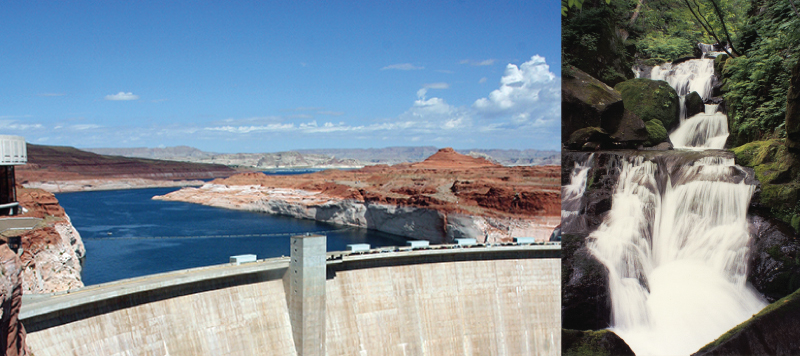| << Chapter < Page | Chapter >> Page > |
Energy is defined as the ability to do work. As you’ve learned, energy exists in different forms. For example, electrical energy, light energy, and heat energy are all different types of energy. While these are all familiar types of energy that one can see or feel, there is another type of energy that is much less tangible. This energy is associated with something as simple as an object held above the ground. In order to appreciate the way energy flows into and out of biological systems, it is important to understand more about the different types of energy that exist in the physical world.
When an object is in motion, there is energy associated with that object. In the example of an airplane in flight, there is a great deal of energy associated with the motion of the airplane. This is because moving objects are capable of enacting a change, or doing work. Think of a wrecking ball. Even a slow-moving wrecking ball can do a great deal of damage to other objects. However, a wrecking ball that is not in motion is incapable of performing work. Energy associated with objects in motion is called kinetic energy . A speeding bullet, a walking person, the rapid movement of molecules in the air (which produces heat), and electromagnetic radiation like light all have kinetic energy.
Now what if that same motionless wrecking ball is lifted two stories above a car with a crane? If the suspended wrecking ball is unmoving, is there energy associated with it? The answer is yes. The suspended wrecking ball has energy associated with it that is fundamentally different from the kinetic energy of objects in motion. This form of energy results from the fact that there is the potential for the wrecking ball to do work. If it is released, indeed it would do work. Because this type of energy refers to the potential to do work, it is called potential energy . Objects transfer their energy between kinetic and potential in the following way: As the wrecking ball hangs motionless, it has 0 kinetic and 100 percent potential energy. Once it is released, its kinetic energy begins to increase because it builds speed due to gravity. At the same time, as it nears the ground, it loses potential energy. Somewhere mid-fall it has 50 percent kinetic and 50 percent potential energy. Just before it hits the ground, the ball has nearly lost its potential energy and has near-maximal kinetic energy. Other examples of potential energy include the energy of water held behind a dam ( [link] ), or a person about to skydive out of an airplane.


Notification Switch
Would you like to follow the 'Biology' conversation and receive update notifications?